Green Island (綠島) off the east coast used to be the local version of Siberia — a place where hardened criminals and political prisoners were sent to rot.
Now it has become a major tourist destination, attracting visitors not just with its lush scenery, but also its dark history, reflected in a sprawling prison compound where thousands of inmates were locked up — and some died.
“When I was a little girl, my dad used to scare me by saying if I didn’t behave, he’d send me to Green Island,” said one of the visitors to the jail-turned-museum, 22-year-old Vicky Liu.
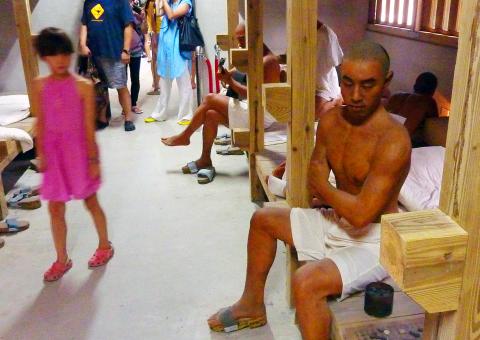
Photo: PETER HARMSEN, AFP
“Now I’ve actually seen it, and I must agree it’s a bit scary to think about how all these people were locked up together in small cells,” she said.
The island’s jail compound, squeezed in between black coastal rocks and steep green hills, was the home of several well-known dissidents in the days when Taiwan was a right-wing one-party state.
Now a museum and a memorial, it seeks to collect and display artifacts from the period between 1951 and 1987 when the aim of the facility was to re-educate inmates, sometimes by extraordinarily brutal means.
Crude drawings by former inmates are on display, showing prisoners being beaten with long bamboo sticks or forced to kneel on broken glass. Executions also took place in the 1950s.
These may be extreme instances of life in the prison, which had different names, including New Life Correction Center, and a population of 2,000 at its peak. However, few dispute that this was a place of suffering.
“It was a kind of concentration camp,” said Cheng Sheng-hsing, head of the museum, as he eyed the azure ocean, which kept the prisoners from fleeing better than any wall.
“We want it to be a site of remembrance,” he said.
To help a new generation better understand, the museum uses panoramas and animations, as well as life-size wax figures showing inmates toiling in manual labor or crammed together in large prison dormitories.
Green Island still houses a jail, although today it is a place where Taiwan puts its common criminals. However, its reputation as a prison island does not hurt tourism.
Several shops in the town of Jhongliao (中寮) sell prison-themed souvenirs, often displaying inmates in cartoon form as sneering gangsters busy planning daredevil escapes.
“They’re not meant to depict political prisoners, so we’re not opposed to this,” said Fu Chie-wei, an official with the museum.
About 80 percent of all visitors to the island, located a 40-minute ferry journey from Taiwan proper, are young people attracted by the famed dining and diving.
However, a growing number is also interested to hear more about the time when Green Island doubled as Taiwan’s prison in paradise.
Until a couple of decades ago, the prison area — which took up nearly one-10th of the island’s 15km2 — was strictly off limits to the locals.
“I was in my 20s when the last political prisoner left,” said Chang Hai-lang, a local worker in his 40s.
“Generally, we didn’t see them very often. But some were highly educated and were sent to teach the local children,” he said.
As personal recollections fade of the time when the island was the last station for Taiwan’s unwanted, it becomes a matter of growing urgency for the museum to preserve memories for posterity.
“Some people died in jail, but how many, we have no precise idea. It’s hard to come by official records, so we have to rely on oral histories,” said He Hsing-yi, a guide at the museum.
One way testimony becomes available is when former inmates revisit the island for emotional encounters with sites where they wasted the best years of their lives, according to Cheng.
“Many of the victims are now in their 70s, 80s and 90s. We’re trying to write down their histories to keep a record of what happened here,” he said.
“What impresses me is that they show no anger and no hatred. They hope to pass their experience on, and let people know about the sacrifices they made for freedom and democracy,” Cheng said.
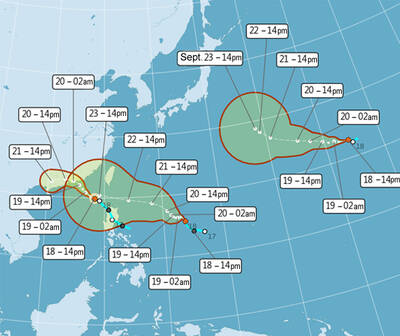
PEAK MONTHS: Data showed that on average 25 to 27 typhoons formed in the Pacific and South China seas annually, with about four forming per month in July and October One of three tropical depressions in the Pacific strengthened into a typhoon yesterday afternoon, while two others are expected to become typhoons by today, Central Weather Administration (CWA) forecaster Lee Ming-hsiang (李名翔) said yesterday. The outer circulation of Tropical Depression No. 20, now Typhoon Mitag, has brought light rain to Hualien, Taitung and areas in the south, Lee said, adding that as of 2pm yesterday, Mitag was moving west-northwest at 16kph, but is not expected to directly affect Taiwan. It was possible that Tropical Depression No. 21 would become a typhoon as soon as last night, he said. It was moving in a
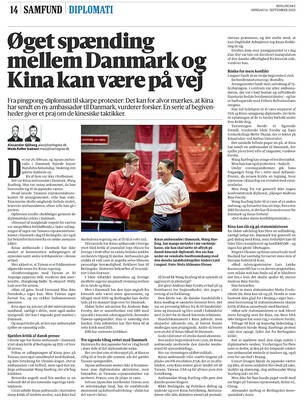
A Taiwanese academic yesterday said that Chinese Ambassador to Denmark Wang Xuefeng (王雪峰) disrespected Denmark and Japan when he earlier this year allegedly asked Japan’s embassy to make Taiwan’s representatives leave an event in Copenhagen. The Danish-language Berlingske on Sunday reported the incident in an article with the headline “The emperor’s birthday ended in drama in Copenhagen: More conflict may be on the way between Denmark and China.” It said that on Feb. 26, the Japanese embassy in Denmark held an event for Japanese Emperor Naruhito’s birthday, with about 200 guests in attendance, including representatives from Taiwan. After addressing the Japanese hosts, Wang
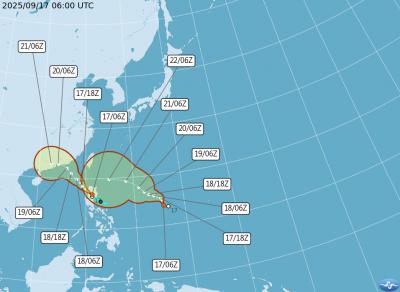
One of two tropical depressions that formed offshore this morning could turn into a moderate typhoon by the weekend, the Central Weather Administration (CWA) said today. Tropical Depression No. 21 formed at 8am about 1,850km off the southeast coast, CWA forecaster Lee Meng-hsuan (李孟軒) said. It is expected to move in a northwesterly direction as it continues building momentum, possibly intensifying into Typhoon Mitag this weekend, she added. The radius of the storm is expected to reach almost 200km, she said. It is expected to approach southeast of Taiwan on Monday and pass through the Bashi Channel between Tuesday and Wednesday,
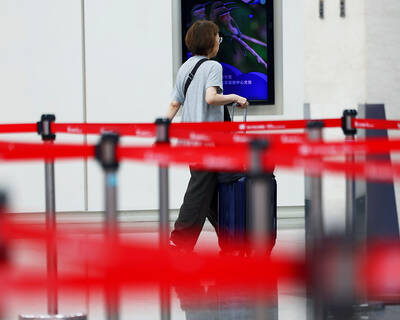
About nine Taiwanese are “disappeared,” detained, or otherwise deprived of freedom of movement in China each month, the Mainland Affairs Council (MAC) said yesterday. Between Jan. 1 last year and Aug. 31 this year, 188 Taiwanese travelers went missing, were detained and interrogated, or had their personal freedom restricted, with some questioned in airports or hotel lobbies, the council said. In a statement ahead of the Mid-Autumn Festival, the council urged people visiting China for any reason to be highly vigilant and aware of the risks. Of the reported cases, 50 people were “disappeared” after entering China, 19 were detained and 119 had